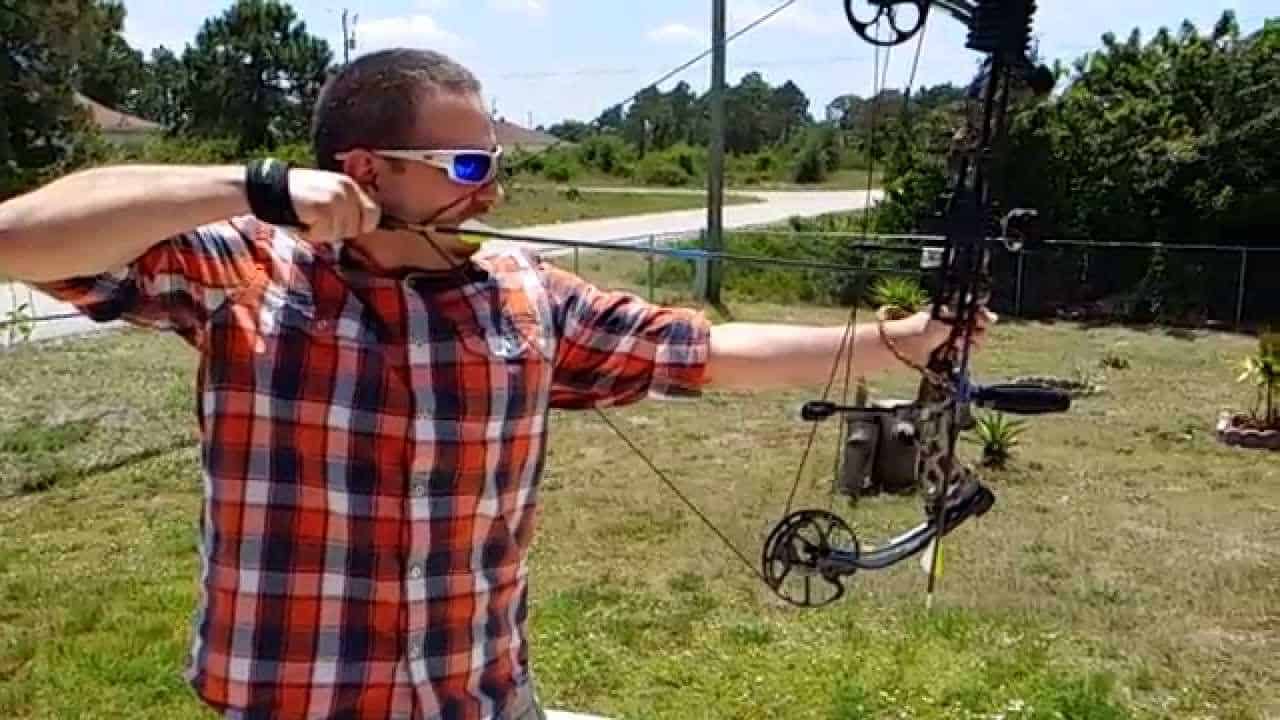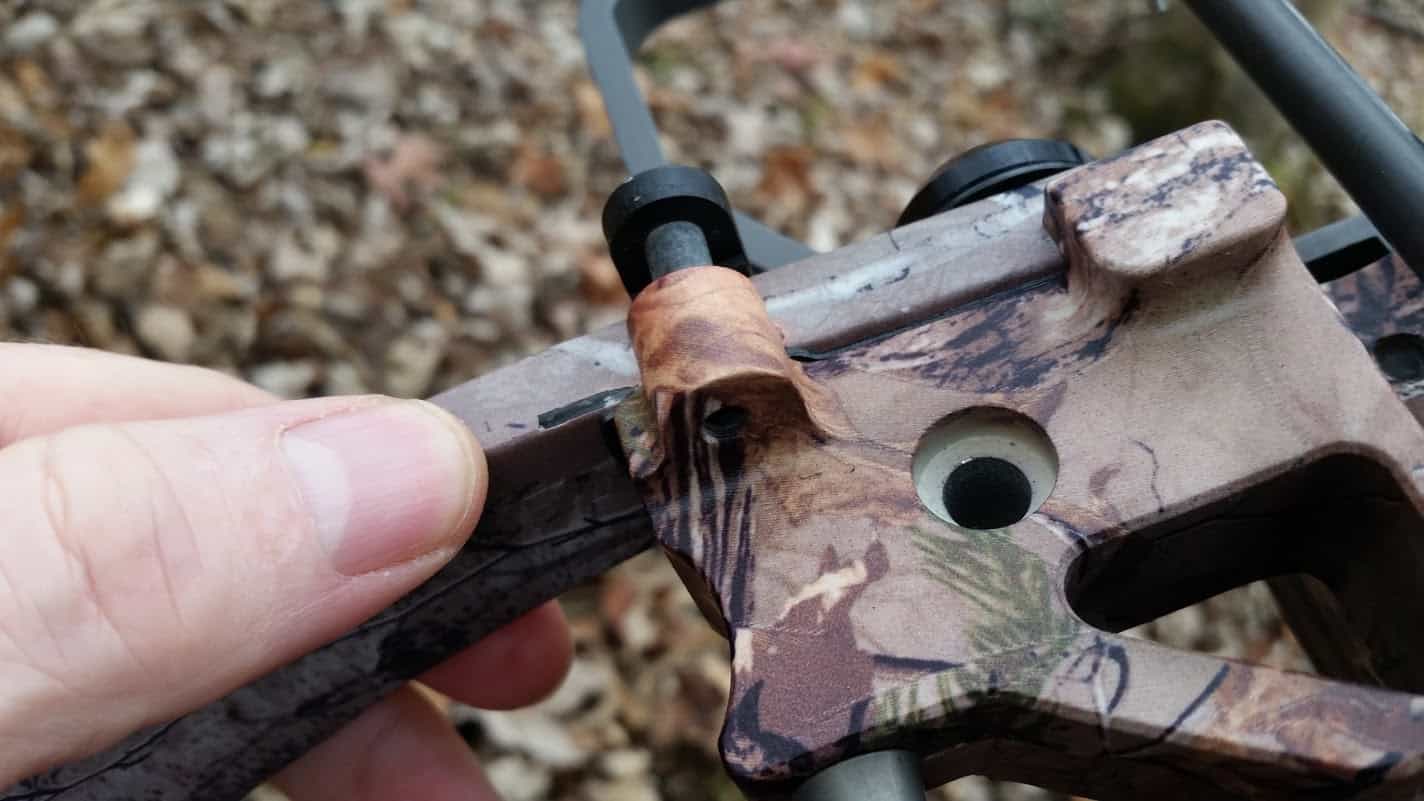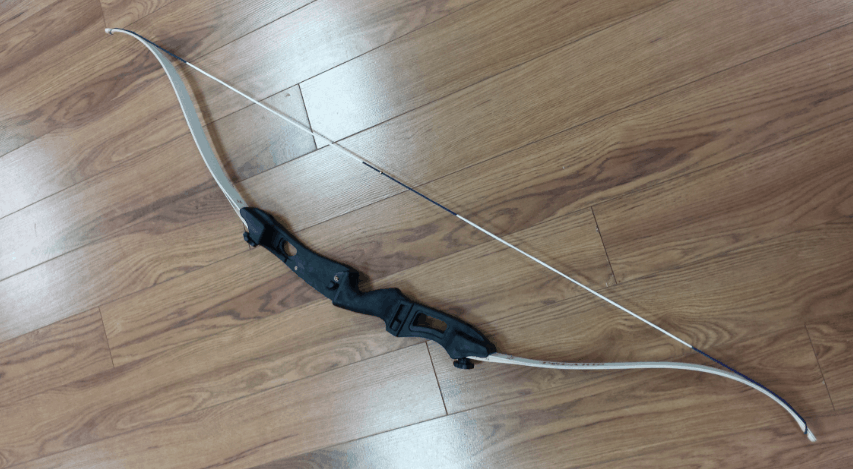Archery is a sport in which safety has to be taken very seriously. After all, the bow and arrow were originally designed as an instrument to kill.
However, while rules such as avoiding shooting an arrow over a ridge or never pointing a loaded bow at another person may seem obvious—dry firing a bow seems somewhat innocuous.
Yet, this simple action can have drastic consequences for both you and your equipment.
In this article, I will take you through exactly what dry firing a bow entails, its consequences and the actions you should take if it occurs.
Table Of Contents
What Happens When You Dry Fire a Bow?

Dry firing (or sometimes known as “dry loosing”) means that the bow string is released after being placed under tension without an arrow being in place (nocked) or an arrow being incorrectly shot.
In most cases, this occurs completely by accident—often as a result of:
- Incorrect nocking of the arrow.
- A damaged or loosed nock due to the arrow previously hitting a hard object.
- Stumbling (for example during stealth maneuvers when hunting).
- Involuntary physiological actions—such as sneezing or coughing.
- Using an arrow that is too light for the power of the bow.
However, it can also occur by novices or inquisitive friends releasing the bow on purpose with no arrow.
A bow is like a guitar—if you have visitors to your home they’ll be tempted to pick it up and play with it—despite having no idea what they are doing.
Hence, I always recommend keeping your bow away from tactile friends and relatives—or if they are insistent on seeing it, explaining first that it’s a dangerous weapon and should not be fired.
I often make the comparison to a pistol—they wouldn’t pull the trigger on an unloaded handgun in your home—the same applies to your bow.
But why is dry firing dangerous? It comes down to a little bit of physics.
When we pull back on the bowstring, energy is transferred into elastic potential energy.
With a correctly nocked arrow, releasing the bowstring converts potential energy into kinetic energy, propelling the arrow forwards.
The majority of this power translates into the arrow’s flight.
Yet, a small amount does remain within the bow mechanism, producing an audible “twang,” vibrations felt through the hand and arm and causing the bowstring to oscillate.
However, if the bowstring is released with no arrow or one that is incorrectly nocked, this can cause some serious implications.
Energy cannot be destroyed — it can only change form. Hence, with no arrow, the elastic potential energy has to go somewhere—and it’s transferred throughout the entire bow mechanism.
Is It Bad to Dry Fire A Bow?

It’s never, ever a good idea. Dry firing your bow (whether on purpose or by accident) tends to result in one of three outcomes.
1. Nothing Apparently Bad Has Occurred
At first sight, this appears to be the best result—your bow is still in one piece and you have escaped without any injury. But, this can be deceiving and it’s no time for complacency—the bow still needs to be checked for damage.
2. Complete Destruction
This is the worst case scenario. Upon dry firing your bow, the whole apparatus explodes—cogs, screws, splinters, and string all flying through the air. T
he shooting position requires the bow to be located close to your face and eyes—making this occurrence extremely dangerous.
3. Your String Breaks
A snapping string whipping around your eyes is to be avoided at all costs. If you have managed to escape the possibility of a blinding injury, the broken bowstring shouldn’t be considered the only issue.
With the energy being powerful enough to break the string, the chances are that other, less visible, damage to the bow itself may have occurred. Again, time to check the entire bow.
Here’s a quick video showing dry firing breaking the bowstring.
What Do You Do If You Dry Fire a Bow?
Should this occur, there are two main steps to take, to ensure both you and your bow are safe.
1. Be Calm and Look After Yourself First
Bows are expensive pieces of equipment—but your first priority is your own well being. Don’t panic. If you are still holding your bow, lay it gently down and take some deep breaths to calm yourself.
Then check yourself for signs of injury—don’t automatically assume that as you have no pain you are fine. Shock can often block out pain signals to the brain—so give yourself a thorough examination.
Most importantly, get a friend or club colleague to check your eyes—tiny splinters from the bow can become wedged and cause permanent damage if not removed.
2. Methodically Check Your Bow

If the damage is severe, the chances are you will not fail to see that the bow has suffered. However, it may not be immediately apparent.
Shooting a damaged bow is likely to both increase the severity of its deterioration and raise the risk to yourself.
First, perform an overall visual inspection. Pay particular attention to the limbs, looking for splinters or cracks. A technique used by many archers is to gently stroke the bow with a cotton wool ball.
The fine hairs will snag on any hard-to-see splinters.
Second, check the main components for integrity.
If it’s a compound bow, pay particular attention to the cams and pulleys—especially where they are secured to the bow through holes or slots, which are the weakest points.
When you are satisfied, nock an arrow and draw the bowstring. Listen for any unusual noises, vibrations and just see if it “feels” normal. Ideally, take your bow to a professional archery store for a proper examination.
Dry Firing a Compound Bow

Although you should never dry fire any bow—committing this sin on a compound bow is the most dangerous and damaging.
As they are designed to generate an incredible amount of force through their numerous cams and pulleys—the energy released during a dry fire is dramatic.
Not only can it effectively destroy the bow, but also, the many movable small parts are likely to fly off—increasing the chance of injury.
How to Tell If a Compound Bow Has Been Dry Fired
If you are sharing equipment, have lent your bow to a friend, or are looking at purchasing a second-hand bow, there are signs to check for to see if it has been dry fired. Examine for:
- Limb cracks and splinters.
- Creaks and groans as the bow is drawn.
- Bent cams.
- Splitting bowstring—especially near the end servings.
Dry Firing a Crossbow

While many modern crossbows are increasingly being fitted with anti-dry-firing mechanisms, there are still many that are not.
As this model is usually the bow of choice for the hunter, they are often intentionally dry fired more than the compound or recurve types.
This is because once the arrow has been nocked and the bowstring drawn—any noise which startles the target animal may make the shot impossible and therefore the draw redundant.
In these circumstances, the arrow is often removed and the bow dry fired.
It’s much safer to risk damaging an arrow by releasing it into the ground than removing it completely and dry firing.
How to Tell If a Crossbow Has Been Dry Fired
Check for:
- Cracks in the composite laminate of the bow.
- Bent camshafts.
- Fraying or fuzzy strings.
- Indentations where the cams have previously been released and crashed into the limbs.
Dry Firing a Recurve Bow

As recurve bows typically hold less potential energy than compound and crossbow types, and have fewer operational parts, the chance of damaging or being injured by a dry fire is less likely.
Yet, this is still no reason to intentionally release the bowstring without an arrow.
Recurves in many cases still can produce over 50 foot-pounds of energy—powerful enough to damage your equipment or inflict injury on yourself.
How to Tell If a Recurve Bow Has Been Dry Fired
Look out for:
- Delamination of the limbs—especially at the curve tips.
- Cracks in the riser.
- Damaged limb string nocks or slots.
- Fraying string loops.
Conclusion
Dry firing a bow is the biggest sin in archery—causing potentially expensive damage to your equipment and serious injury.
As most dry fires are accidental—take steps to reduce the chance of their occurrence.
Ensure your arrow nocks are tight and without any flaws, use arrows that are the correct weight for your bow, and concentrate fully on every draw.
